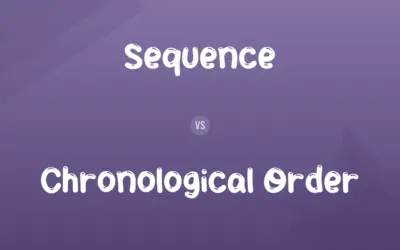Cesspit vs. Septic Tank: Difference and Comparison
Edited by Muazma Batool — By Muneeza Rehman — Published on March 7, 2024
A cesspit is a sealed underground storage pit for waste, requiring frequent emptying, while a septic tank processes and separates waste, discharging effluent to a drainage field.

Difference Between Cesspit and Septic Tank
Cesspits, or cesspools, are simple, sealed underground pits that collect liquid waste and sewage. They do not treat the waste but store it indefinitely until removed by pumping. Septic tanks, on the other hand, are part of a more complex system that separates solids from liquids, allowing bacteria to break down the waste partially before the liquid (effluent) is safely discharged into a drainage field.
Muneeza Rehman
Mar 07, 2024
The maintenance and servicing of cesspits are more frequent and costly due to the need for regular emptying to prevent overflow and environmental contamination. Septic tanks, while also requiring maintenance, typically need less frequent servicing. They primarily require periodic pumping to remove the solids that accumulate over time and cannot be broken down further.
Muneeza Rehman
Mar 07, 2024
Cesspits are often installed where conditions do not allow for a septic tank, such as areas with high groundwater or inadequate space for a drainage field. Septic tanks are preferred in areas where the ground and environmental conditions permit the installation of a drainage field, allowing for natural filtration of the effluent.
Muneeza Rehman
Mar 07, 2024
In terms of environmental impact, septic tanks are considered more eco-friendly due to their ability to partially treat waste on-site, reducing the risk of pollution. Cesspits, while safe when managed properly, pose a greater risk to the environment if they leak or overflow, as they store untreated sewage.
Jonathan
Mar 07, 2024
The choice between a cesspit and a septic tank often comes down to local regulations, environmental considerations, and the feasibility of installing a drainage field. While cesspits are simpler and require less space, septic tanks offer a more sustainable solution for waste management by treating and dispersing wastewater in an environmentally friendly manner.
Jonathan
Mar 07, 2024
Cesspit vs. Septic Tank Comparison Chart
Function
Stores waste without treatment
Separates and partially treats waste
Muneeza Rehman
Mar 07, 2024
Maintenance
Requires frequent emptying
Needs periodic pumping and inspection
Muneeza Rehman
Mar 07, 2024
Environmental Impact
Higher risk of contamination if not maintained
Lower risk, treats waste before dispersal
Muneeza Rehman
Mar 07, 2024
Installation Conditions
Used where septic tanks aren't feasible
Requires suitable conditions for a drainage field
William
Mar 07, 2024
Cost
Higher long-term due to frequent servicing
Generally lower servicing costs, but higher initial installation cost
William
Mar 07, 2024
Cesspit vs. Septic Tank Definitions
◉Cesspit
A sealed underground pit for untreated waste storage.
Rural homes without sewer access may use a cesspit.
Henry
Feb 22, 2024
◉Septic Tank
An underground system for wastewater treatment.
Septic tanks are common in areas without centralized sewer systems.
Muneeza Rehman
Feb 22, 2024
◉Cesspit
Requires regular pumping to prevent overflow.
Cesspit servicing involves removing the contents to maintain capacity.
Jonathan
Feb 22, 2024
◉Septic Tank
Effluent is discharged into a drainage field.
Treated water from the septic tank is filtered through soil, further reducing contaminants.
Muneeza Rehman
Feb 22, 2024
◉Cesspit
No waste treatment occurs within.
Cesspits collect sewage exactly as it arrives, without any breakdown or filtration.
Muneeza Rehman
Feb 22, 2024
◉Septic Tank
More eco-friendly than cesspits.
Septic tanks reduce environmental impact by treating sewage before release.
Muneeza Rehman
Feb 22, 2024
◉Cesspit
Higher environmental risk if leaking.
A leaking cesspit can contaminate groundwater and soil.
Henry
Feb 22, 2024
◉Septic Tank
Requires space for a soakaway system.
Successful septic tank installation depends on adequate space for the drainage field.
Levi
Feb 22, 2024
◉Cesspit
Often used where other systems are impractical.
In areas with high water tables, cesspits may be more common.
Muneeza Rehman
Feb 22, 2024
◉Septic Tank
Separates solids from liquids, allowing bacterial breakdown.
The septic tank's design facilitates the separation and digestion of solid waste.
Muneeza Rehman
Feb 22, 2024
◉Cesspit
A cesspool; a pit or covered cistern used to collect sewage and waste water.
Muneeza Rehman
Feb 21, 2024
Cesspit vs. Septic Tank Frequently Asked Questions
Can a septic tank overflow like a cesspit?
Yes, if not properly maintained or if the drainage field fails, a septic tank can overflow or cause backups.
Muneeza Rehman
Mar 07, 2024
Is one more environmentally friendly than the other?
Septic tanks are generally considered more eco-friendly as they treat waste before releasing it.
Jonathan
Mar 07, 2024
Why would someone choose a cesspit over a septic tank?
Cesspits may be the only option in areas unsuitable for septic tanks due to ground conditions or space constraints.
Nolan
Mar 07, 2024
What's the main difference between a cesspit and a septic tank?
Cesspits store untreated waste, requiring frequent emptying, while septic tanks treat waste and release effluent into a drainage field.
Muneeza Rehman
Mar 07, 2024
How often do cesspits need to be emptied?
The frequency depends on the size and household usage but typically more often than septic tanks.
Muneeza Rehman
Mar 07, 2024
Can both systems be used in any location?
The suitability depends on local environmental regulations, soil conditions, and space availability.
Muneeza Rehman
Mar 07, 2024
What are the signs of a failing cesspit or septic tank?
Warning signs include unpleasant odors, slow drainage, sewage backup, and soggy ground near the tank or pit.
Muneeza Rehman
Mar 07, 2024
How does a septic tank work?
It separates solids from liquids; solids are broken down by bacteria, and the liquid effluent is filtered through a drainage field.
William
Mar 07, 2024
How do you choose between a cesspit and a septic tank?
Consider local regulations, environmental impact, maintenance costs, and installation feasibility based on your property.
Levi
Mar 07, 2024
What maintenance does a septic tank require?
Septic tanks require pumping of sludge and inspection of the system to ensure proper function.
Muneeza Rehman
Mar 07, 2024
Content Creators
Written by
Muneeza RehmanAt Comparisons.wiki, Muneeza skillfully navigates the vast sea of information, ensuring clarity and accuracy as the lead content editor. With a keen eye for detail, she curates every comparison to enlighten and engage readers.
Edited by
Muazma BatoolAs a content editor, Muazma Batool is not just a grammar guru but a creative mastermind who breathes life into every word. With an eagle eye for detail and a passion for storytelling, she transforms bland text into engaging content that captivates audiences and drives results.


































